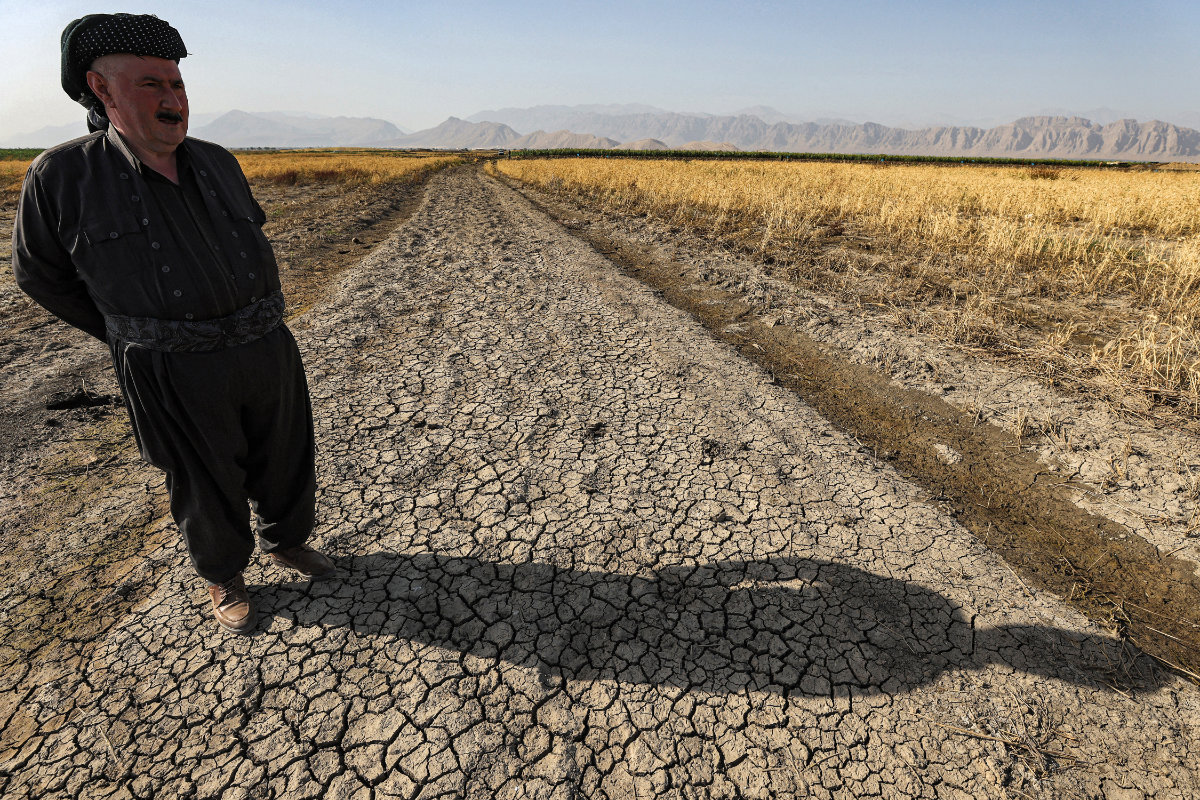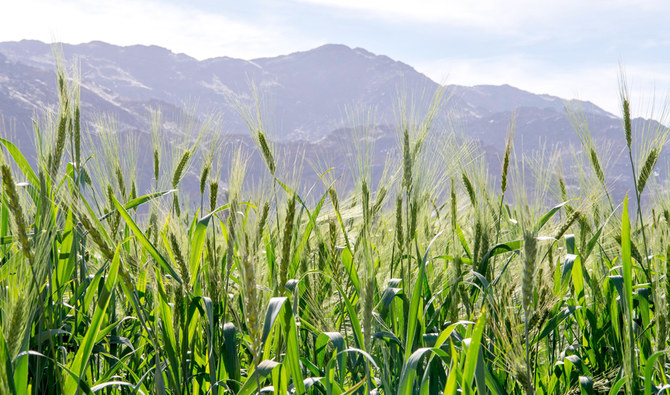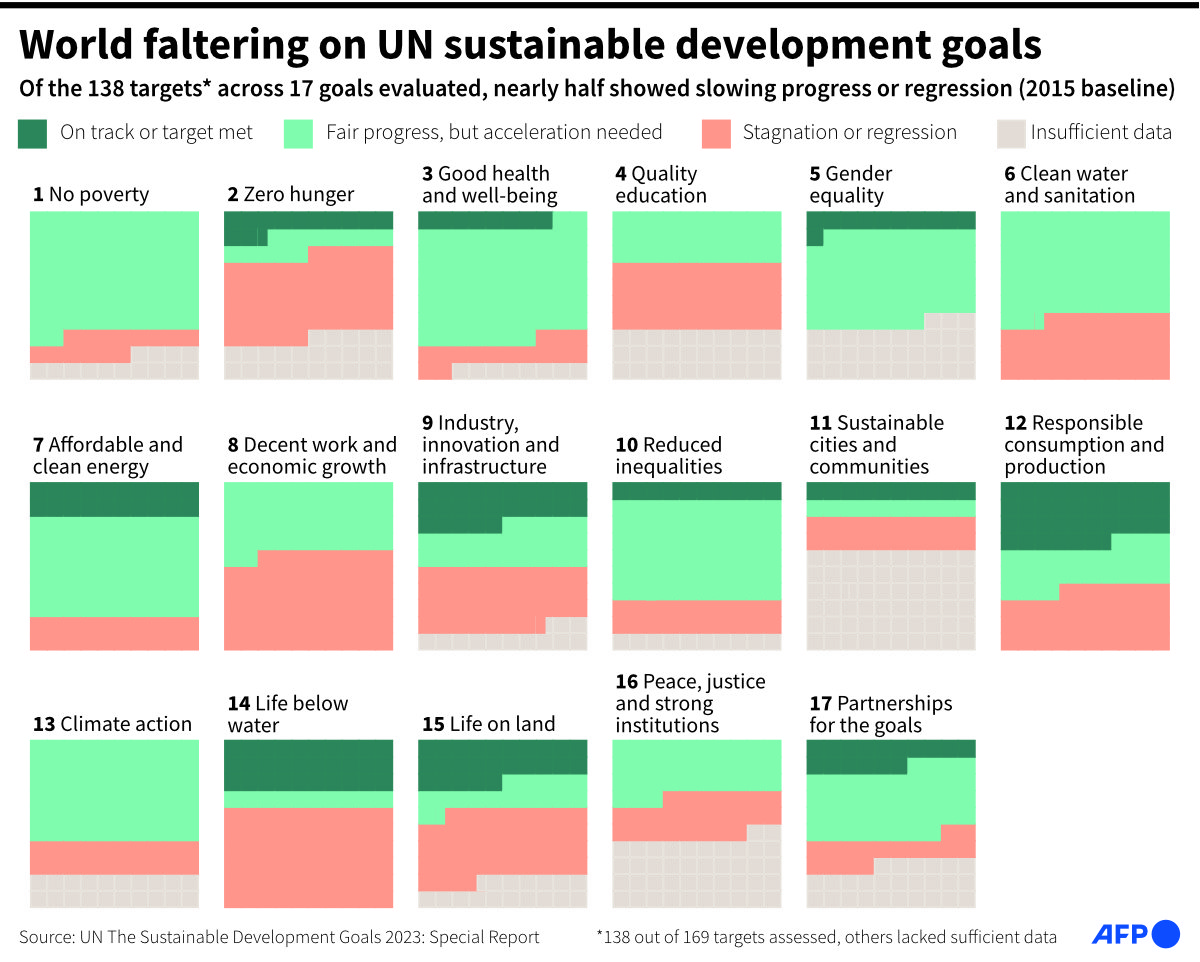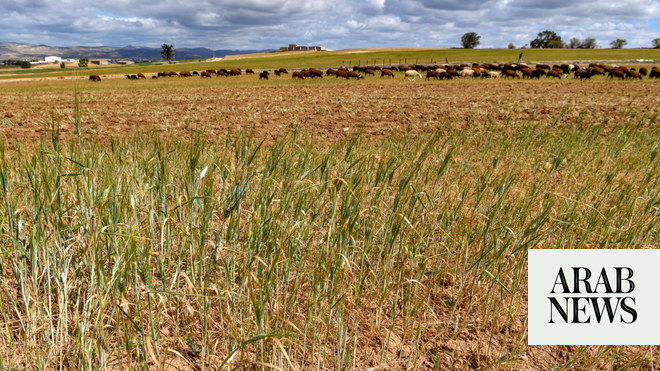RIYADH: Global food insecurity is much worse than previously thought. That's the conclusion of the State of Food Security and Nutrition in the World 2024 report released this week by a coalition of UN actors, which found that efforts to address malnutrition have suffered serious setbacks.
As countries around the world fall well short of achieving the second UN Sustainable Development Goal of “zero hunger” by 2030, the report notes that climate change is increasingly recognized as a key factor exacerbating hunger and food insecurity.

As a major importer of food, the Middle East and North Africa region is considered particularly vulnerable to climate-related crop failures in countries of origin and the subsequent imposition of protectionist tariffs and commodity price fluctuations.
“Climate change is a driver of food insecurity in the Middle East, where both global and local shocks matter,” David Laborde, director of the Food and Agriculture Organization of the United Nations' Food and Agriculture Organization's Agri-Food Division for Economics and Policy, told Arab News. .
“Now, especially for the Middle East, I think the global angle is important because the Middle East imports a lot of food. Even if you don't have a (climate) shock at home, if you don't have drought or floods at home — if it happened in Pakistan, if it happened in India, if it happened in Canada — the Middle East will feel it.”
This section contains relevant reference points located in (opinion box)
The World Food Security and Nutrition Report has been compiled annually since 1999 by FAO, the International Fund for Agricultural Development, the United Nations Children's Fund, the World Food Program and the World Health Organization to monitor global progress towards ending hunger.
During a recent event at UN headquarters in New York, the authors of the report emphasized the urgent need for creative and equitable solutions to address the financial shortfall to help those nations suffering from severe hunger and malnutrition, exacerbated by climate change.
In addition to climate change, the report found that factors such as conflict and economic downturns are becoming more frequent and severe, impacting the affordability of healthy food, unhealthy food environments and inequality.

Indeed, food insecurity and malnutrition are worsening due to persistent food price inflation that is undermining global economic progress.
“There is also an indirect effect that we should not neglect – how climate shock interacts with conflict,” Laborde said.
For example, in North Africa, negative climate shocks can lead to further conflicts, “either because people start competing for natural resources, access to water, or just because in your area you can also have people who have nothing else to do,” he said.
“There are no jobs, they can't work on their farm, so they can join the rebellion or other elements.”
DID YOU KNOWKNOW?
By 2023, up to 757 million people were suffering from hunger, the equivalent of one in 11 globally and one in five in Africa.
The global prevalence of food insecurity has not changed for three consecutive years, despite progress in Latin America.
There has been some improvement in the global prevalence of stunting and wasting in children under five.
By the end of 2021, G20 countries have pledged to take $100 billion worth of unused Special Drawing Rights held by high-income countries' central banks and allocate them to middle- and low-income countries.
But since then, that pledge has fallen by $13 billion, with the worst-performing countries receiving less than 1 percent of that support.

Saudi Arabia is one of the countries to have exceeded its 20 percent commitment, along with Australia, Canada, China, France and Japan, while others have failed to reach 10 percent or ended their engagement altogether.
“Saudi Arabia is a very large country in the Middle East, so what they're doing is important, but they also have the financial capacity that many other countries don't have,” Laborde said.
“It can be through their SDR. It can also be through their sovereign fund because it matters where and how you invest to make the world more sustainable. So I will say yes, prioritizing investment in low- and middle-income countries in food and nutrition security and related programs can be important.

Although the prevalence of malnutrition in Saudi Arabia has declined in recent years, the report shows that the rate of stunting among children has actually increased by 1.4 percent over the past 10 years.
There has also been an increase in children with overweight, obesity and anemia in women as the population continues to grow. In this sense, it is not so much a lack of food, but a lack of healthy eating habits.
“Saudi Arabia is a good example where I would say that traditional hunger and lack of food … is becoming less of an issue, but other forms of malnutrition are actually becoming what's important,” Laborde said.

In 2023, about 2.33 billion people worldwide faced moderate or severe food insecurity, and one in 11 people faced hunger, exacerbated by various factors such as economic decline and climate change.
The affordability of a healthy diet is also a critical issue, especially in low-income countries where more than 71 percent of the population cannot afford adequate nutrition.
In countries like Saudi Arabia, where overeating is an increasingly common problem, Laborde suggests that the right investment in nutrition and health education and policy adaptation may be the way to go.
While the Kingdom continues to provide support to countries in crisis, including Palestine, Sudan and Yemen, through its humanitarian arm KSrelief, these states continue to face dire conditions. Gaza in particular suffered as a result of the war with Israel.

“Even before the start of the conflict, especially at the end of last year, the situation in Palestine was complicated, both in terms of the agricultural system (and) population density. There was already a problem with malnutrition,” Laborde said.
“Something that is true everywhere, in Sudan, Yemen, Palestine, when you add conflicts and military operations, the population suffers a lot because you can really destroy production. You will destroy access to water. But people also can't go to the grocery store when the truck or ship bringing in the food is disrupted.”
While Palestine and Sudan are extreme cases, around 733 million people worldwide still face hunger, marking a continuation of the high levels seen over the past three years.

“We are working on the ground with the World Food Program (and) other organizations to bring food to people in need in Palestine,” Laborde said of the FAO's work. “We will also work to rebuild things that need to be rebuilt before and after the conflict. But without peace we can only do limited things.'
FAO helps food-insecure countries by bringing better seeds, animals, technology and irrigation solutions to develop production systems, while working to protect livestock from pests and diseases by providing veterinary services and creating incentives for countries to adopt better politics.
The report's projections for 2030 indicate that approximately 582 million people will continue to suffer from chronic malnutrition, half of them in Africa. This mirrors the levels seen in 2015 when the SDGs were adopted, suggesting a plateau is underway.

The report highlights the need to create better funding distribution systems under this year's theme: “Financing to End Hunger, Food Insecurity and All Forms of Malnutrition”.
“In 2022, there were a lot of headlines about global hunger, but today it has more or less disappeared when the numbers and people who are hungry have not disappeared,” Laborde said, referring to the damaging impact of the war in Ukraine. on world food prices.
“We have to say that we are not fulfilling the promises made by the politicians. Today's world produces enough food, so much more depends on how we distribute it, how we provide access to it. It's a man-made problem, so it should be a man-made solution.”

